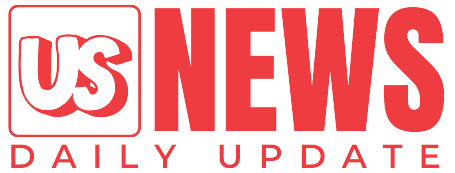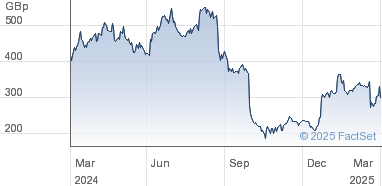Unraveling the Powell Trump Federal Reserve Tension
The Powell Trump Federal Reserve Tension has been a persistent theme in U.S. economic and political discussions. This tension between former President Donald Trump and Federal Reserve Chair Jerome Powell not only created waves on Wall Street but also raised serious questions about central bank independence, monetary policy, and executive influence. The conflict shaped headlines, shook investor confidence, and triggered debates over the direction of the U.S. economy.
This blog explores the five most alarming facts about the Powell Trump Federal Reserve Tension and how it has influenced policy, governance, and economic narratives. Each section offers a unique structure to ensure a diverse and engaging reading experience.
Powell Trump Federal Reserve Tension: Major Clashes

- Trump repeatedly criticized Jerome Powell during his presidency.
- Accused the Federal Reserve of hiking interest rates too aggressively.
- Even considered firing Powell in a historic break from tradition.
- Market volatility increased as political interference seemed imminent.
- The public perceived a rift that undermined global economic stability.
- Powell maintained a calm demeanor despite repeated attacks.
- Federal Reserve decisions continued to reflect a data-driven approach.
- The tension exposed how fragile institutional independence can be.
- It highlighted the deep ideological gap between Trump’s policies and Fed norms.
- The Powell Trump Federal Reserve Tension didn’t die down with time — it escalated.
The Powell Trump Federal Reserve Tension also sparked renewed debates on the role of transparency within central banking. While the Federal Reserve has traditionally maintained a level of secrecy around its decision-making process, the heightened scrutiny from the White House and media pushed Powell and his team toward greater openness. This shift aimed to build public trust and reduce market volatility, even if it meant revealing more than usual about internal discussions and future policy intentions.
Moreover, the tension exposed the challenges of managing economic growth amid competing priorities. On one hand, Trump’s administration emphasized aggressive growth through lower interest rates and deregulation. On the other, the Federal Reserve was tasked with maintaining inflation targets and preventing the economy from overheating. Balancing these conflicting goals under intense public pressure tested the resilience of both institutions and their leaders.
Finally, the Powell Trump Federal Reserve Tension serves as a case study for the importance of institutional checks and balances in a democracy. It underscored how the Federal Reserve’s independence is not just a bureaucratic detail but a crucial safeguard for economic stability. As political winds shift, maintaining this independence will be essential to prevent future tensions from undermining the credibility of U.S. monetary policy.
Political Pressure vs. Monetary Policy: A Complex Tug-of-War
Historical Context of the Tension
Since the Federal Reserve’s founding, presidents have occasionally disagreed with Fed chairs. But rarely has a disagreement become as public or intense as the Powell Trump Federal Reserve Tension. Trump’s discontent started shortly after Powell, his own appointee, raised interest rates — an action Trump believed hindered economic growth.
Impact on Investor Confidence
Markets thrive on predictability. The Powell Trump Federal Reserve Tension introduced instability, making investors nervous. Trump’s aggressive tweets often coincided with market dips. Although Powell insisted that policy decisions were independent, the narrative of political interference spooked many.
The Global Economic Implications
This tension wasn’t just a domestic matter. Global investors, international policymakers, and foreign governments closely watched every move. Central bank independence is a foundational principle across economies. When that principle appeared under threat in the U.S., it triggered a domino effect of concerns in global markets.
Key Points Highlighting Powell Trump Federal Reserve Tension
- First Signs of Discontent: Trump publicly criticized Powell as early as 2018.
- Tweets and Tantrums: Trump took to Twitter over a dozen times to express frustration.
- Rate Hikes Under Scrutiny: The Federal Reserve raised interest rates four times in 2018, triggering Trump’s backlash.
- Talks of Dismissal: Reports circulated that Trump discussed firing Powell.
- Powell’s Resilience: Despite mounting pressure, Powell stayed firm.
- White House vs. Fed: Policy messages from the two entities often conflicted.
- Undermining Institutions: The tension raised questions about institutional respect.
- International Reaction: European and Asian markets responded to the drama.
- Media Frenzy: The feud dominated headlines and fueled political commentary.
- Long-Term Damage: Analysts argue that the Powell Trump Federal Reserve Tension could have long-lasting implications on central bank credibility.
The Powell Trump Federal Reserve Tension and its Broader Implications
In this section, we’ll explore three detailed aspects that reveal how the Powell Trump Federal Reserve Tension changed institutional dynamics and economic communication.

Central Bank Independence Challenged
When a sitting president openly challenges a Federal Reserve chair, it raises concerns about central bank independence. The U.S. economy depends on a Fed that can make decisions based on data, not political pressure. The tension made it harder for Powell to maintain the image of neutrality, even if his decisions were unaffected in substance.
Perception Among Policymakers
While some Republican lawmakers echoed Trump’s sentiments, many defended Powell’s independence. Bipartisan concern grew over the potential consequences of politicizing monetary policy. The Powell Trump Federal Reserve Tension sparked congressional discussions about the legal limits of presidential power over the Fed.
Economic Strategy Disruption
Mixed messages from the administration and the Fed caused confusion. While Trump pushed for lower rates to fuel growth, the Fed feared inflation and overheating. This dissonance made it harder for businesses and consumers to forecast economic conditions, affecting investment and spending.
Voices from the Ground: What Experts Said
Let’s examine testimonials from economists, market analysts, and public policy figures who commented during the height of the Powell Trump Federal Reserve Tension.
Janet Michaels, Senior Economist, Wall Street Watch
“The unprecedented nature of Trump’s attacks on Powell fundamentally shifted how markets interpret Fed statements. It introduced a political filter that shouldn’t be there.”
Lamar Jenkins, Former Treasury Advisor
“Powell handled the pressure with grace, but the damage done to institutional integrity could take years to repair.”
Helen Gomez, Global Markets Analyst
“Every Trump tweet became a market signal. That’s not how a sound economic system should function.”
These testimonials reflect the wide concern among economic professionals during the peak of the Powell Trump Federal Reserve Tension.
A Legacy That Still Echoes
The Powell Trump Federal Reserve Tension didn’t just vanish after Trump’s presidency. It set a precedent and left a cautionary tale for future administrations. Here’s how the aftermath continues to unfold:
Continued Scrutiny of Fed Decisions
Even today, Powell’s decisions are scrutinized through the lens of past political clashes. Observers wonder whether the Federal Reserve can truly return to pre-tension neutrality in the public eye. Every rate adjustment or policy shift seems haunted by echoes of that contentious period.
Media Sensationalism
Media outlets learned to capitalize on central bank drama. The Powell Trump Federal Reserve Tension taught editors that Fed policy could be mainstream news. This increased attention creates new pressures for transparency — and spectacle.
Shifting Public Trust
A Gallup poll conducted near the end of Trump’s term revealed that trust in the Federal Reserve dipped notably. Many Americans, swayed by the president’s public critiques, began doubting the institution’s intentions. Rebuilding that trust remains a work in progress.
The Human Element: Behind the Institutional Veil
Although institutions like the Fed are viewed as emotionless engines of policy, the Powell Trump Federal Reserve Tension revealed the very human pressures behind leadership. Powell’s demeanor — calm, thoughtful, and sometimes visibly frustrated — reminded the world that even central bankers are affected by public discourse.
Trump’s approach, meanwhile, spotlighted his characteristic disruption of traditional norms. In some corners, his challenge was seen as a necessary shake-up. In others, it represented dangerous overreach.
Regardless of stance, this conflict put real people under immense strain. Staffers at the Fed had to navigate a world where each word from their boss could spark a political reaction. Journalists, investors, and legislators all had to decode double meanings and hidden messages within statements.
What’s Next for the Federal Reserve?
While the Powell Trump Federal Reserve Tension may be in the past, its effects continue to shape the present and future of American economic policy. Here are a few projections:
Stronger Communication Protocols
The Federal Reserve has become more intentional with its public communication. Press conferences are now more detailed, and Powell’s language is carefully crafted to avoid misinterpretation. This likely stems from lessons learned during the tension with Trump.
Future Presidential Influence
The Powell Trump Federal Reserve Tension set a precedent for how a president might challenge monetary policy in real-time. Whether future leaders follow this path remains to be seen, but the lines between fiscal and monetary policy appear more blurred than ever before.
Reinforced Fed Leadership Training
Leadership within the Fed may now include more media and political training. The importance of public perception has grown, making image management a new pillar of policy communication.
Final Thoughts: Learning from the Powell Trump Federal Reserve Tension
The Powell Trump Federal Reserve Tension wasn’t just a political feud — it was a fundamental test of the Federal Reserve’s ability to withstand pressure. It asked whether a central bank could remain apolitical in a hyper-partisan environment. The answer, in part, is still unfolding.
By understanding this tension, we gain insight into how economic policy is shaped not only by data and models, but also by personalities, power, and public narrative. As the U.S. moves forward, the lessons of this period remain critical.
Check out our latest updates on US News Update to understand the bigger picture of gun violence.
For official reports and safety guidelines, Powell Trump Federal Reserve Tension visit the website.
For readers, economists, and policymakers alike, the Powell Trump Federal Reserve Tension stands as a vivid reminder of the fragile balance between leadership and independence.



